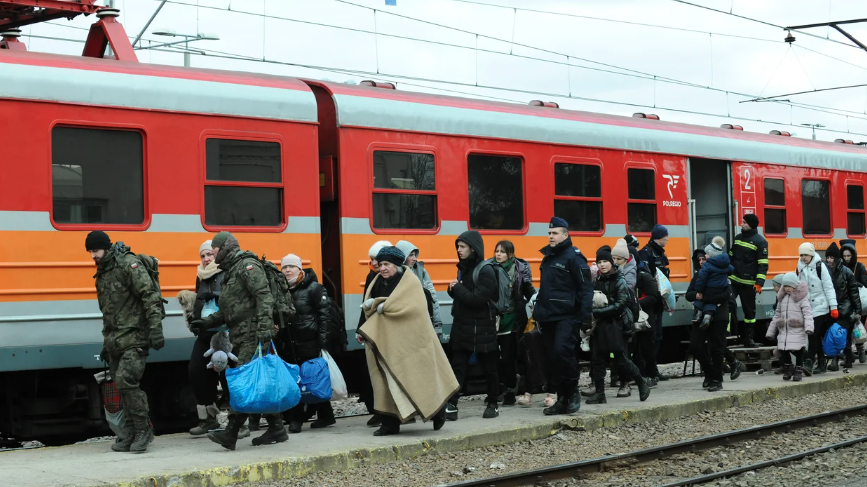
African Migrants And Ukrainian Wheat, A Tale Of Two Seas
 3 min
3 min
African Migrants And Ukrainian Wheat, A Tale Of Two Seas
Since Russia’s invasion of Ukraine, more than 14 million people have fled their homes — close to a third of Ukraine’s total population. Nearly half have left for neighboring countries, turning into the largest displacement in Europe since World War II.
It is a sudden surge in migration that nobody expected, a major anomaly that neither demographers or policymakers were prepared for. And as has been noted, unlike with migrants from other parts of the world, the EU quickly opened its doors, granting Ukrainians the right to stay and work throughout its 27 member nations for up to three years. The impact is being felt more severely especially in countries like Poland, which have welcomed the largest numbers of Ukrainians who crossed the border.
But there is also a wave of arrivals underway that nobody can claim was unexpected, arriving (often in perilous conditions) on Europe’s southern coasts — and this year, both the scale and danger of “migration season” is even more fraught than usual.
In Italy, there has been a 30% increase of arrivals by boat in the first five months of 2022 compared to the same period in 2021. Europe’s border and coast guard agency, Frontex, which polices the entries, said that the first quarter of 2022 saw the largest influx of migrants since 2016 — at the height of the so-called refugee crisis — without counting Ukrainians. Deaths have gone up too, with the central Mediterranean route through Libya remaining the most deadly.
Mediterranean countries are bracing for a new emergency, expecting migrant numbers to soar as a result of the drought in sub-Saharan Africa and the shipments of grains halted in Ukraine that has made wheat prices soar especially across Africa. In a summit last week, Italy, Cyprus, Greece, Malta and Spain called on “adequate mechanisms to distribute migrants.”
Does this mean more detention centers in Libya, more repatriations to dangerous countries, more barriers put up for those crossing? And how much is Putin counting on solidarity beginning to wane out as the EU’s economy struggles after a pandemic and a war? As the summer approaches, we are seeing the blockade of Ukrainian food exports coincide with the swell of would-be migrants setting off from the shores of North Africa. Never before have the Mediterranean and Black Seas seemed so close.
— Irene Caselli
[Photo: Ukrainian refugees taking the train in a small village on the Poland-Ukraine border - Ervin Shulku/ZUMA]









 English
English
 Français
Français
 Deutsch
Deutsch
 Italiano
Italiano
 Español
Español



 Beitragen
Beitragen



















 Du kannst deine Lieblingsautoren unterstützen
Du kannst deine Lieblingsautoren unterstützen





